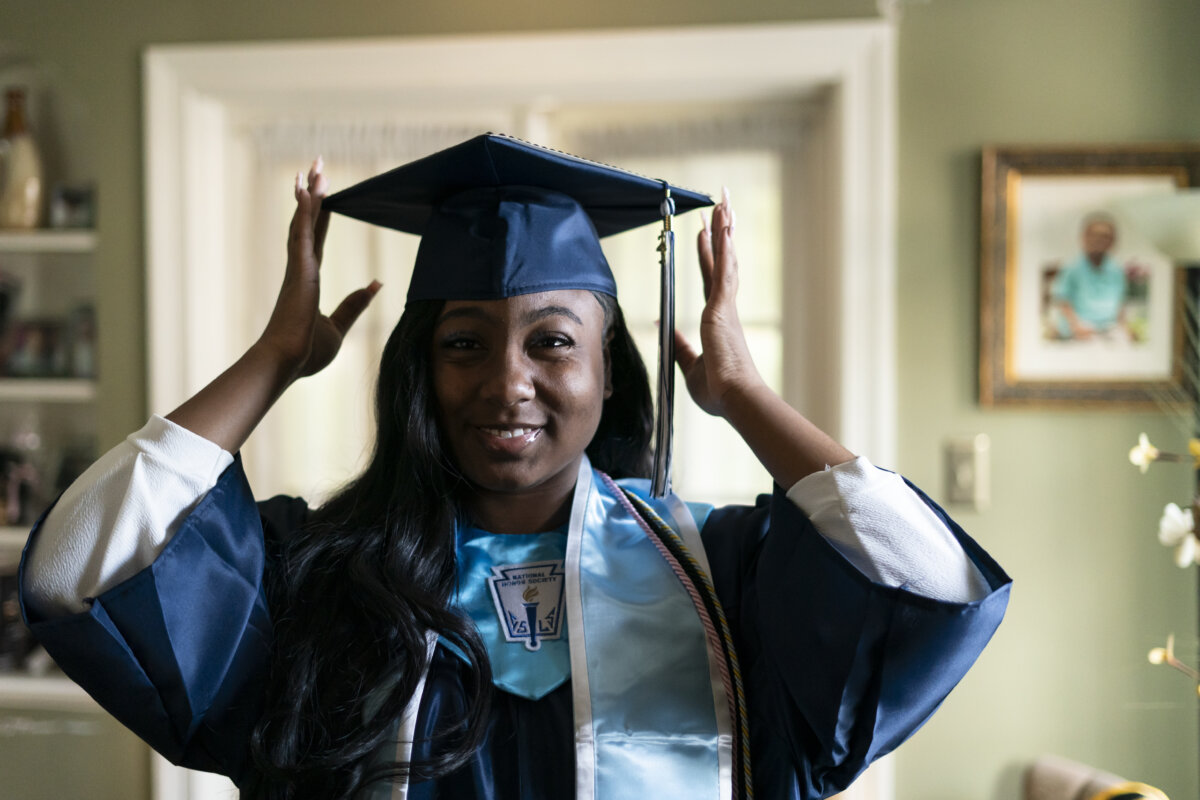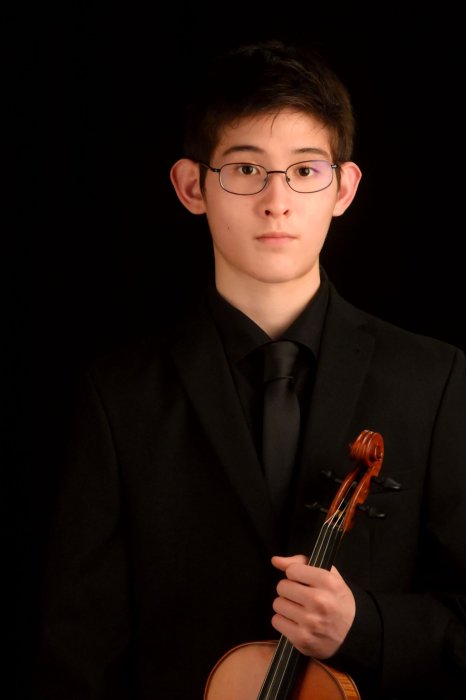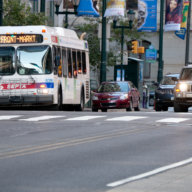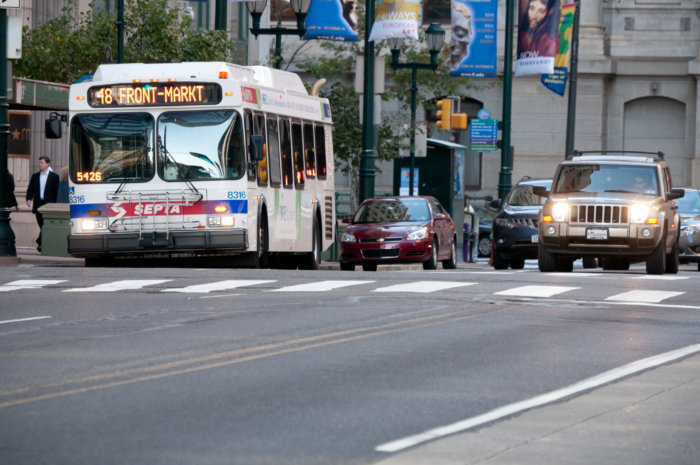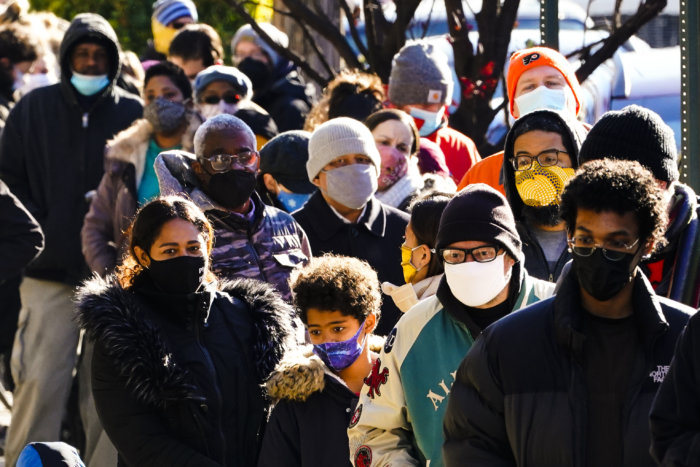By BROOKE SCHULTZ Associated Press/Report for America
Nylla Miller didn’t dwell on the shortcomings of her education when she spoke at her high school graduation. Instead she talked about all she and her classmates had accomplished.
They had achieved at high levels even in cramped classrooms with no air conditioning that got stuffier as the summer months approached — a reversal from earlier in the year, when the heat wasn’t working and it was almost too cold to focus. Athletes had set new records, even on a dirt track that doesn’t meet state standards.
Miller praised the Penn Wood High School Class of ’23 on a hot June morning in Hagan Arena at Saint Joseph’s University in Philadelphia without saying much about all the ways the Pennsylvania public schools had failed them. She told her fellow graduates and their families that they were “the flyest class ever to do it.”
“We have left our mark, not only here, but in every room that we have entered,” she said.
But overcoming adversity was more than just a graduation theme.
A few months earlier, a Pennsylvania court acknowledged the reality that Penn Wood students faced every day: Students in the William Penn district and five others in Pennsylvania didn’t get the education the state constitution entitles them to. The court ordered the state to alter its system — though it didn’t spell out how or how fast.
By pursuing funding equity in court, the financially challenged Pennsylvania districts were following a well-traveled school reform path. For decades, school districts around the country that have found themselves on the short end of a resource imbalance have gone to court to force states to give them a fair shake.
Those lawsuits have not been the solution they were once thought to be. In many cases, legislative action has fallen short of meeting the true cost of bringing balance to public education. In others, major reform efforts brought about short-term changes, but couldn’t sustain success when political or economic climates turned unfavorable. But some states have seen progress in academic achievement and student success when the state provides more funding.
In Pennsylvania, prospects for a legislative fix hinge on a budgeting process in a divided legislature. Emboldened by the court’s decision, House Democrats tried to funnel more money into public education this year, but it hit a wall in the Republican-controlled Senate, which proposed a more modest spending plan.
Yet students like Miller keep going to school in districts forced to address gaps with limited means to do so.
The William Penn district used federal COVID-19 pandemic relief funds to hire a reading specialist to help address achievement gaps, but that money runs out this year. The district would like to keep the position, Superintendent Eric Becoats said, but that could mean raising taxes on a community that is already one of the highest taxed in the state.
A contract for mental health services, paid for with federal funds, is another support program the district may not be able to sustain. That mattered to Miller, who struggled to find someone to confide in. Those needs have only grown more acute, at William Penn and elsewhere, as more teenagers struggle with mental health issues in the aftermath of COVID, especially teen girls.
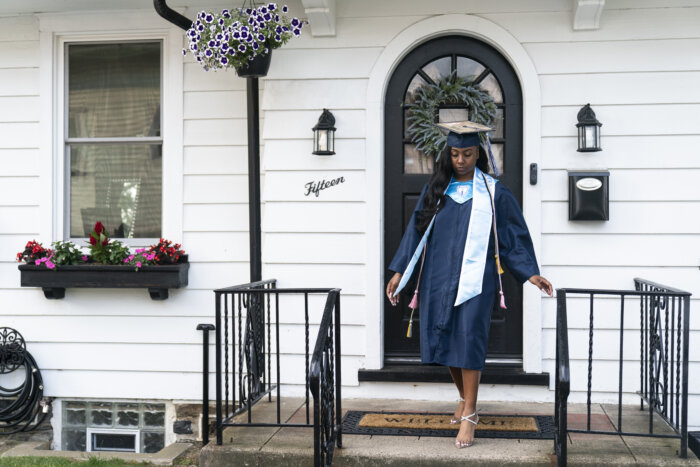
“We switched therapists about three times this year,” Miller said. “So each time you had to get to know somebody new. That’s draining. No student feels like getting to know three different therapists and pouring their heart out three different times and telling your story three different times to three different people. It’s a lot to handle.”
The inferior facilities are a lot to handle, too. Penn Wood has no real science labs. Rooms are cramped, and classes can get overcrowded. Heating and ventilation systems need to be updated. Schools in the district have to share resources, including teachers and staff.
Miller’s classmate, Paul Vandy, says he never had a full sense of what other students have until he and Miller went to a nearby high school with the speech and debate team. It felt like they had stepped into one of the high schools he’d seen on TV.
There were gorgeous white tile floors, robots in the halls. Students had brand new books and their own laptops. And the campus hosted multiple gyms and a beautiful, expansive dance space.
Miller recalled another difference that was hard to miss.
“I think I even wrote down in a journal when I got home the similarities and differences between our schools. And the main difference was the color of the students’ skin,” she said. “My school is predominantly Black, and their school is a predominantly white school. And I think it was just a moment of, like, reality really falling on me — very, very heavy — of what is happening in our district.”
The path forward after high school is complicated, too. When Vandy, who has since decided to attend Thomas Jefferson University to study psychology, began applying to colleges, the senior class’s guidance counselor was booked for days at a time, juggling hundreds of students. There was a lot he had to learn to do on his own.
Still, Miller didn’t say much about the school’s shortcomings when she addressed her fellow classmates as their senior class president. When she thinks about Penn Wood, she thinks about her mother, whose friends graduated from the high school and came back to teach. She thinks about leaning on her own friends as they navigated, and graduated, high school while having less than other districts.
In a ceremony marked by inside jokes, Mariah Carey quotes and shoutouts to friends as they walked across the stage to receive their diplomas, she told them the class gift was a sign-off wall: a place for every graduating class to leave their mark permanently at Penn Wood High School.
A reminder, she said, that the school is more than its deficits.
“We are more than a small part of a lawsuit,” she said, “and we are more than everything that we lack.”



